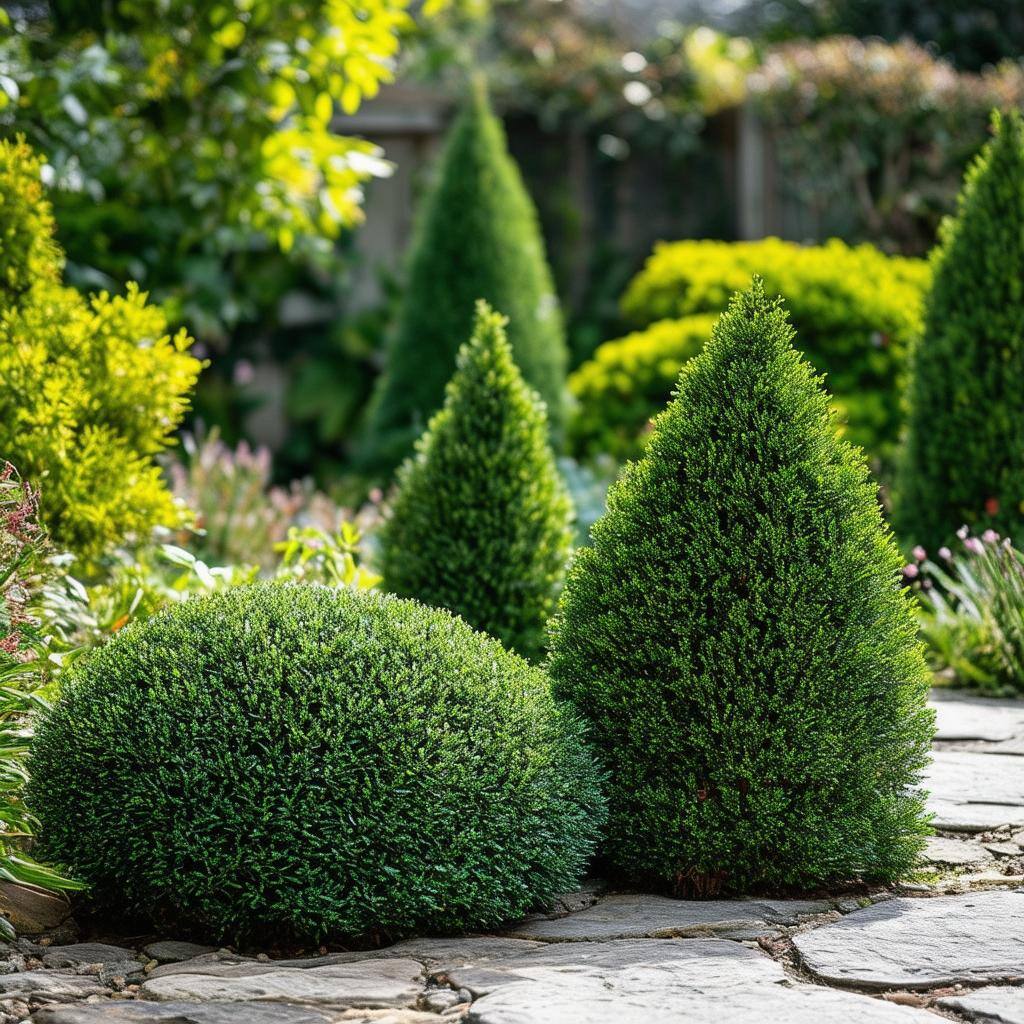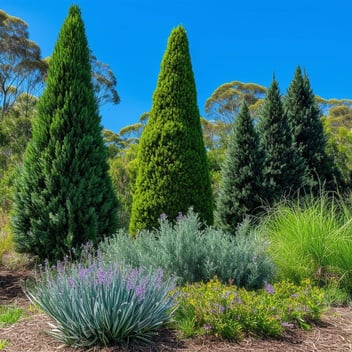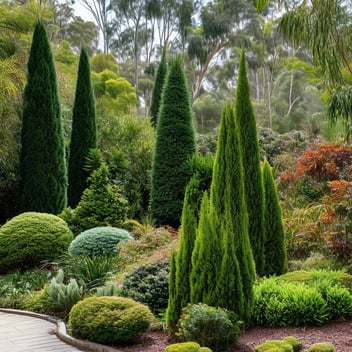Compact Conifers for Small South East Queensland Gardens
Introduction
In the subtropical climate of South East Queensland (SEQ), gardeners often seek plants that offer year-round beauty without overwhelming limited spaces. Compact conifers emerge as ideal candidates, providing structural elegance and evergreen allure tailored for smaller gardens.
Benefits of Compact Conifers
Year-Round Visual Interest
Unlike deciduous plants, conifers maintain their foliage throughout the seasons, ensuring continuous color and texture in the garden. This constancy brings stability and charm, especially during the less floriferous months.
Low Maintenance Requirements
Many compact conifers are inherently low-maintenance, requiring minimal pruning and exhibiting resistance to common pests. Their slow growth rates mean less frequent interventions, allowing gardeners to enjoy their beauty with reduced upkeep.
Structural Elegance
The varied forms of compact conifers—from globular to conical—introduce architectural interest. Their defined shapes can anchor garden designs, serving as focal points or complementary backdrops to other plantings.
Top Compact Conifers for SEQ Gardens
Juniperus squamata 'Blue Star'
Distinctive Silvery-Blue Foliage
This dwarf conifer boasts striking silvery-blue needles, forming a dense, mounded shape. Reaching up to 1 meter in height and spread, it's perfect for rockeries or as a container specimen. Its unique coloration adds a cool tone to garden palettes.
Chamaecyparis obtusa 'Nana Gracilis'
Graceful, Compact Form
Known for its rich green, fan-shaped foliage, this cultivar grows slowly to about 1.2 meters tall. Its naturally sculpted appearance requires little pruning, making it a refined choice for small spaces. The layered branches add depth and texture.
Cryptomeria japonica 'Globosa Nana'
Dense, Mounded Habit
This Japanese cedar variety forms a compact, globe-like shape, typically reaching 1 meter in height. Its soft, bright green needles turn bronze in winter, adding seasonal interest. Ideal for borders or mixed shrub beds, it offers a tactile element to plantings.
Thuja occidentalis 'Danica'
Bright Green, Globe-Shaped Dwarf
'Danica' is a true dwarf arborvitae, forming a neat, rounded ball of dense foliage. It maintains a petite size of about 0.5 meters, making it suitable for edging or container growth. Its vibrant green color persists throughout the year.
Pinus mugo 'Pumilio'
Hardy, Low-Growing Pine
This dwarf mountain pine features dark green needles and a prostrate growth habit, spreading up to 1.5 meters while staying under 1 meter tall. It's well-suited to rock gardens and tolerates a range of soil conditions. Its rugged appearance complements naturalistic designs.
Planting Considerations
Soil Preparation and Drainage
Ensure the planting site has well-drained soil, as conifers dislike waterlogged conditions. Amend heavy clay soils with organic matter to improve permeability. Raised beds can also aid in providing the necessary drainage.
Sunlight Exposure
Most compact conifers thrive in full sun to partial shade. Adequate sunlight promotes dense foliage and vibrant coloration. However, some varieties may appreciate afternoon shade in the hottest months to prevent scorching.
Spacing and Growth Expectations
Even with dwarf varieties, allow sufficient space for mature growth to prevent overcrowding. Consider the plant's expected height and spread, and place accordingly to maintain its natural form without constant pruning.
Maintenance Practices
Pruning and Shaping
Pruning conifers requires a delicate approach, as they do not regrow from old wood. Light trimming to remove dead or damaged branches can be done as needed. For shaping, prune during the growing season, but avoid cutting back into leafless areas, as this can result in bare patches that may not regenerate.
Pest and Disease Management
Vigilance is key. Regular inspections for signs of pests or disease ensure early detection and management. Employing organic treatments and encouraging beneficial insects fosters a balanced ecosystem, reducing reliance on chemical interventions.
Design Ideas for Small Gardens
Creating Focal Points
Compact conifers can serve as striking focal points in small gardens. Their unique forms and colors draw the eye, anchoring the design and providing year-round interest. Positioning a dwarf conifer at a key vantage point can enhance the perceived depth and dimension of the space.
Using Containers for Versatility
Planting conifers in containers offers flexibility, allowing gardeners to rearrange layouts with ease. This approach is particularly beneficial for renters or those with limited ground space. Ensure containers have adequate drainage and are large enough to accommodate the root system, promoting healthy growth.
Combining with Other Plantings
Integrating compact conifers with perennials, grasses, or flowering shrubs creates a dynamic and textured landscape. The evergreen nature of conifers provides a constant backdrop against which seasonal plants can shine. Consider contrasting foliage colors and forms to add visual intrigue and balance to the garden composition.
Conclusion
Incorporating compact conifers into small South East Queensland gardens offers a harmonious blend of beauty and practicality. Their diverse forms, low maintenance needs, and adaptability make them invaluable assets for gardeners seeking to maximize limited spaces. By thoughtfully selecting species and employing mindful planting and care practices, one can cultivate a verdant sanctuary that thrives year-round.




